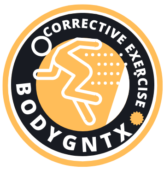Introduction:
Embarking on the journey to master the deadlift requires more than just lifting weights. I am Dr. Neeraj Mehta, a seasoned professional with a PhD in human biomechanics and alternative medicine, backed by over three decades of hands-on experience. In this exploration, we delve into the intricacies of deadlifting, unveiling the biomechanics involved and targeting the associated weak points through a lens of scientific understanding and years of practical expertise.
1. Understanding Biomechanics in Deadlifting:
The deadlift, often regarded as a cornerstone of strength training, necessitates a nuanced understanding of biomechanics. Drawing on my educational background and extensive experience, we dissect the movement patterns, muscle engagement, and joint mechanics integral to an effective deadlift.
“In the realm of deadlifting, biomechanics isn’t just science; it’s the art of understanding how our body moves, ensuring each lift is a symphony of precision and strength.”
Dr: Neeraj Mehta
2. Addressing Weak Points:
No lifter is without weak points, and our journey takes us into a detailed analysis of identifying and fortifying these vulnerabilities. With a wealth of experience guiding lifters, I share insights into common weak points in the deadlift, such as grip strength, lumbar stability, and hip mobility. Strategies for targeted training interventions to fortify these weak links form a key aspect of our discussion.
3. Leveraging Scientific Principles:
Biomechanics, at its core, is an amalgamation of physics, anatomy, and kinesiology. Here, we delve into the scientific principles governing the deadlift. Exploring concepts such as force vectors, torque, and muscle activation patterns, we establish a foundational understanding of how biomechanics shapes the execution of a perfect deadlift.
4. Practical Application of Biomechanics:
Theoretical knowledge finds practical expression as we bridge the gap between biomechanical principles and the actual execution of the deadlift. From foot placement to grip variations, each aspect is scrutinized through a biomechanical lens, ensuring that the lift is not only powerful but also biomechanically optimized for efficiency and safety.
“Weak points in deadlifting aren’t weaknesses; they’re opportunities for growth. Identify, fortify, and watch your strength soar.”
Dr. Neeraj Mehta
5. Individualized Deadlift Optimization:
Recognizing the diversity among lifters, our exploration extends to the customization of deadlift techniques. Through case studies and personalized coaching experiences, we explore how individual factors like limb length, anthropometry, and previous injuries influence the biomechanical approach to deadlifting. Tailoring the technique to the individual is key to unlocking maximal strength potential.
6. Overcoming Plateaus with Biomechanical Precision:
Plateaus in deadlift performance are common but conquerable. Our discussion incorporates biomechanical strategies to overcome deadlift plateaus. From periodization techniques to specialized accessory exercises, we explore how a deep understanding of biomechanics can be the catalyst for breaking through performance plateaus.
“Biomechanics is the silent architect of a perfect deadlift, revealing the intricate dance between muscles, joints, and physics.”
Neeraj mehta (PHD biomechanics)
7. Integrating Alternative Approaches:
In a holistic approach, we integrate alternative medicine perspectives into deadlift training. Mindfulness, breathwork, and recovery strategies from alternative medicine are explored to complement traditional strength training. By broadening our scope, we address not only the physical demands of deadlifting but also the mental and emotional aspects.
8. Real-world Success Stories:
Anecdotes from my professional journey enrich our understanding. Real-world success stories showcase the transformative power of a biomechanically informed approach to deadlifting. Each narrative illustrates how a comprehensive grasp of biomechanics transforms deadlifting from a mere exercise into a skill mastered through nuanced understanding and persistent refinement.
“Deadlifting plateaus are conquered not just with brute strength but with a biomechanical strategy. Precision, not power, propels you past limitations.”
By Dr Neeraj Mehta
Conclusion:
In concluding our exploration, it becomes evident that mastering the deadlift is not just about lifting a barbell; it’s about understanding the intricate dance between biomechanics and the individual. With Dr. Neeraj Mehta as your guide, this journey becomes a synergy of scientific precision, decades of practical wisdom, and evidence-backed strategies. Unveil the secrets of the deadlift, strengthen your weak points, and embark on a transformative journey toward lifting mastery. Continuous learning and application of biomechanical knowledge are essential for staying at the forefront of the ever-evolving field of fitness science.
“In the deadlift, science and experience converge. Dr. Neeraj Mehta’s journey unfolds a narrative where each lift is a lesson, and mastery is a blend of knowledge and relentless refinement.”
Says: dr neeraj mehta
Here are some reputable sources for further study on the biomechanics of deadlifting:
- National Center for Biotechnology Information (NCBI): A comprehensive database of scientific articles and studies on various topics, including biomechanics and strength training.
- PubMed: A free database of biomedical and life sciences literature, providing access to a vast collection of research articles.
- Journal of Biomechanics: An international journal publishing research on the mechanics of living organisms, including human biomechanics.
- American Council on Exercise (ACE): ACE offers educational resources and articles on exercise science, biomechanics, and strength training.
- International Society of Biomechanics (ISB): An organization dedicated to promoting the study of biomechanics and its application to various fields.
- Strength and Conditioning Journal: A journal by the National Strength and Conditioning Association (NSCA) covering topics related to strength training, conditioning, and biomechanics.
